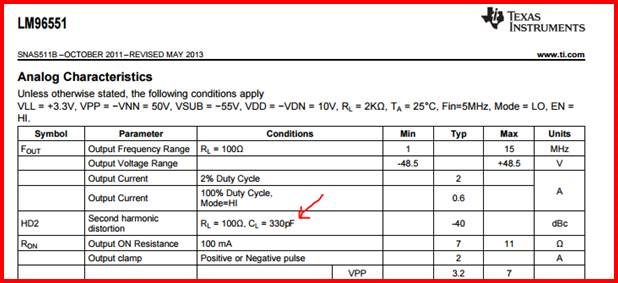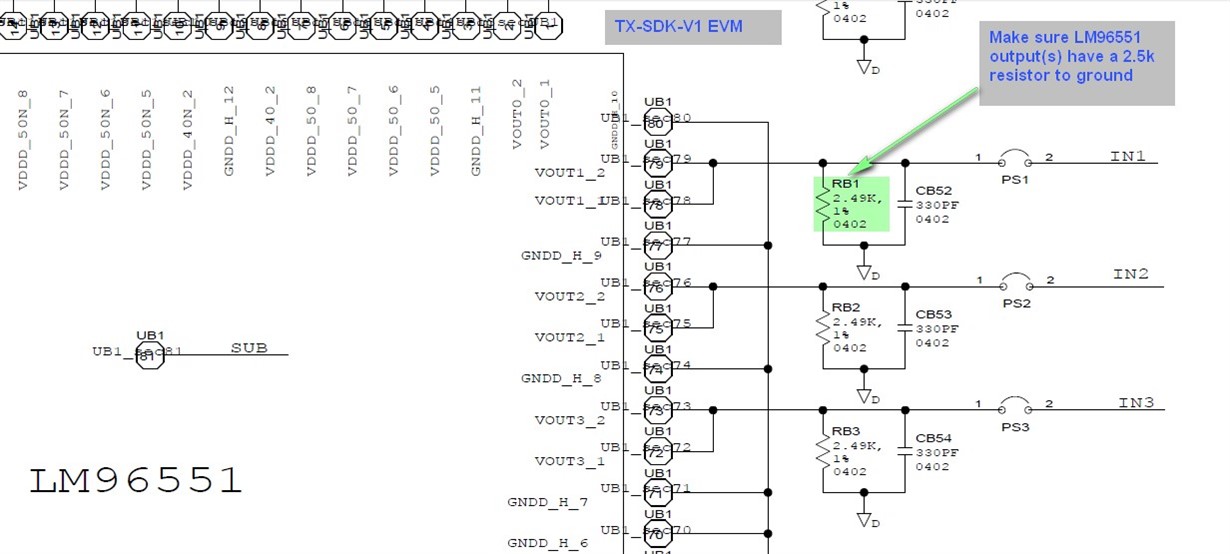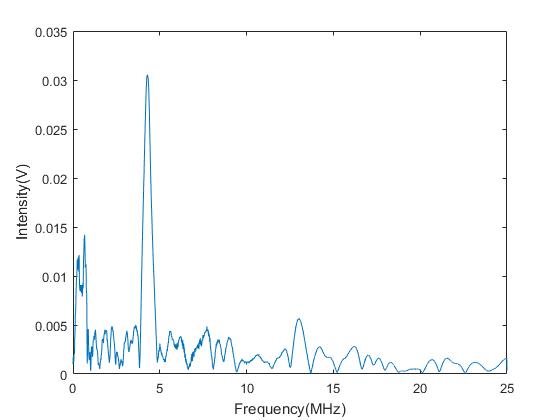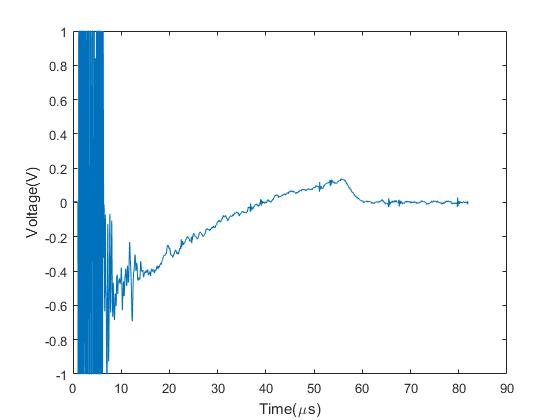Hi,
I'm using LM96551/LM96530/AFE5803 to build a prototype. 8 channels of the LM96551 were parallel connected to excite a 2000pF ultrasound transducer. A picture below shows a received signal. A +50V and -50V pulser excite at the 1us. Then reflected shock lasts about 2us (from 1us to 3us). The amplifier seems not working in the range from the 3us to 8us. However, the received signal has a peak interference at 6us. The problem is that I cannot use the signal before 8us. Can anyone help me solve this problem?
I also capture the signal before and after the LM96530. Channel 1 is the signal after LM96530 and Channel 2 is the signal before LM96530.










